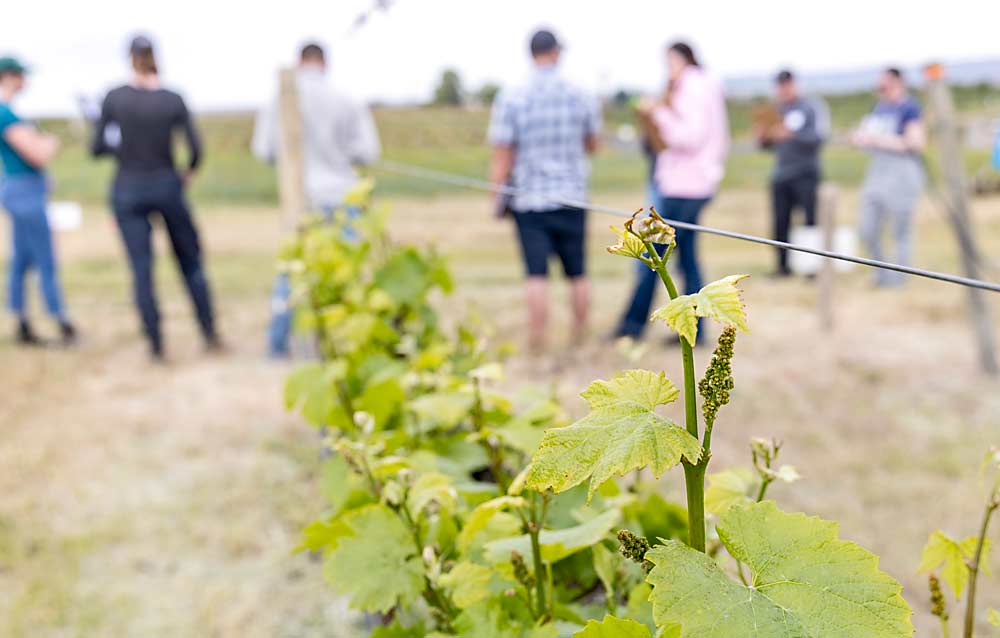
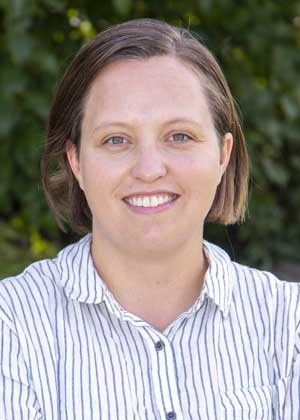
How hard can it be to count the emerging inflorescences on a grapevine and predict the yield ahead?
It turns out to be both simple and complicated — an art as well as a science, according to Michelle Moyer, Washington State University’s extension viticulturist. In May, she introduced scouting approaches, and their pitfalls, to a group of about a dozen vineyard interns and one vineyard journalist.
For the interns, many of whom were just starting seasonal roles with Ste. Michelle Wine Estates and other area vineyards, the training Moyer organized offered a chance to translate into practice what they have learned in school about pest and disease scouting, cold damage, crop load and nutrient management. For me, it was a rare chance to take a hands-on approach to an industry I write about every day.
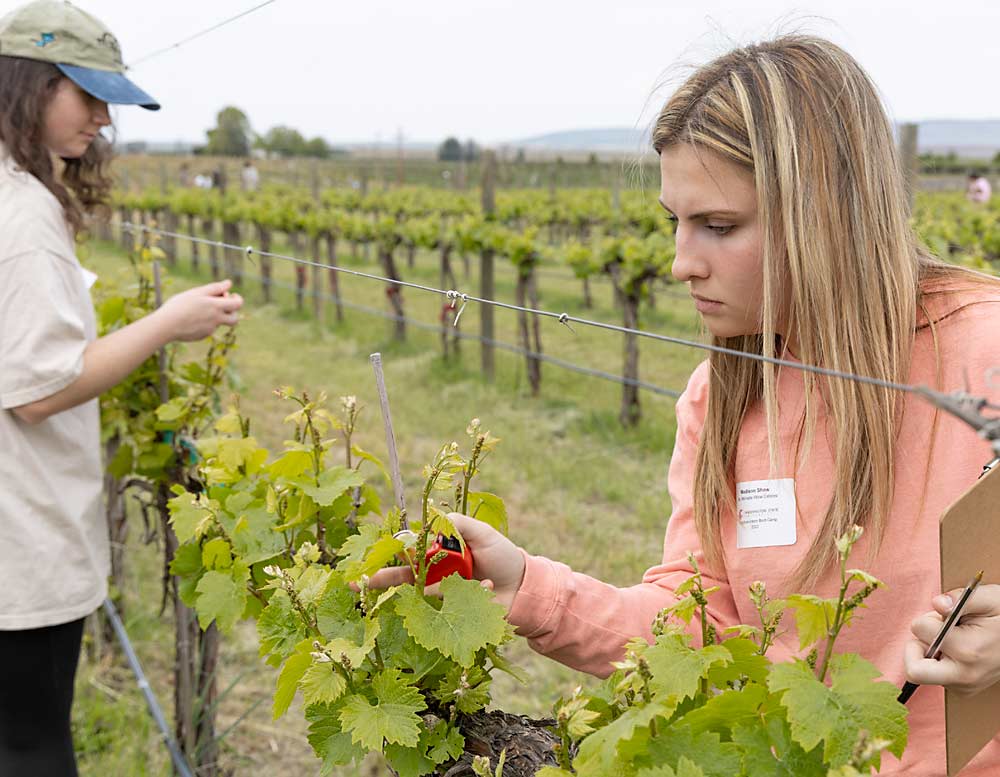
The training at WSU’s Irrigated Agriculture Research and Extension Center in Prosser started with classroom lessons about the seasonal progression of vineyard management tasks, highlighting the key pests to scout for and the management tasks that take place during each phase of development. Then, we headed to the WSU vineyard for hands-on exercises in pest scouting and crop estimation strategies.
And by hands-on, I mean my hands on a clicker as I counted clusters, some barely more than just a fuzzy nub in late May, thanks to the unusual weather Central Washington has been experiencing.
“It’s a crazy year,” Moyer said. Unprecedented heat last summer may have reduced fruit set for this season, vines may have sustained some winter cold damage, and then a cool spring slowed development to such a crawl that she wasn’t even sure there would be clusters to count in late May.
All those circumstances make good early-season crop load estimates matter more than ever.
“You don’t want to order cluster thinning if the cold has already done that,” Moyer said.
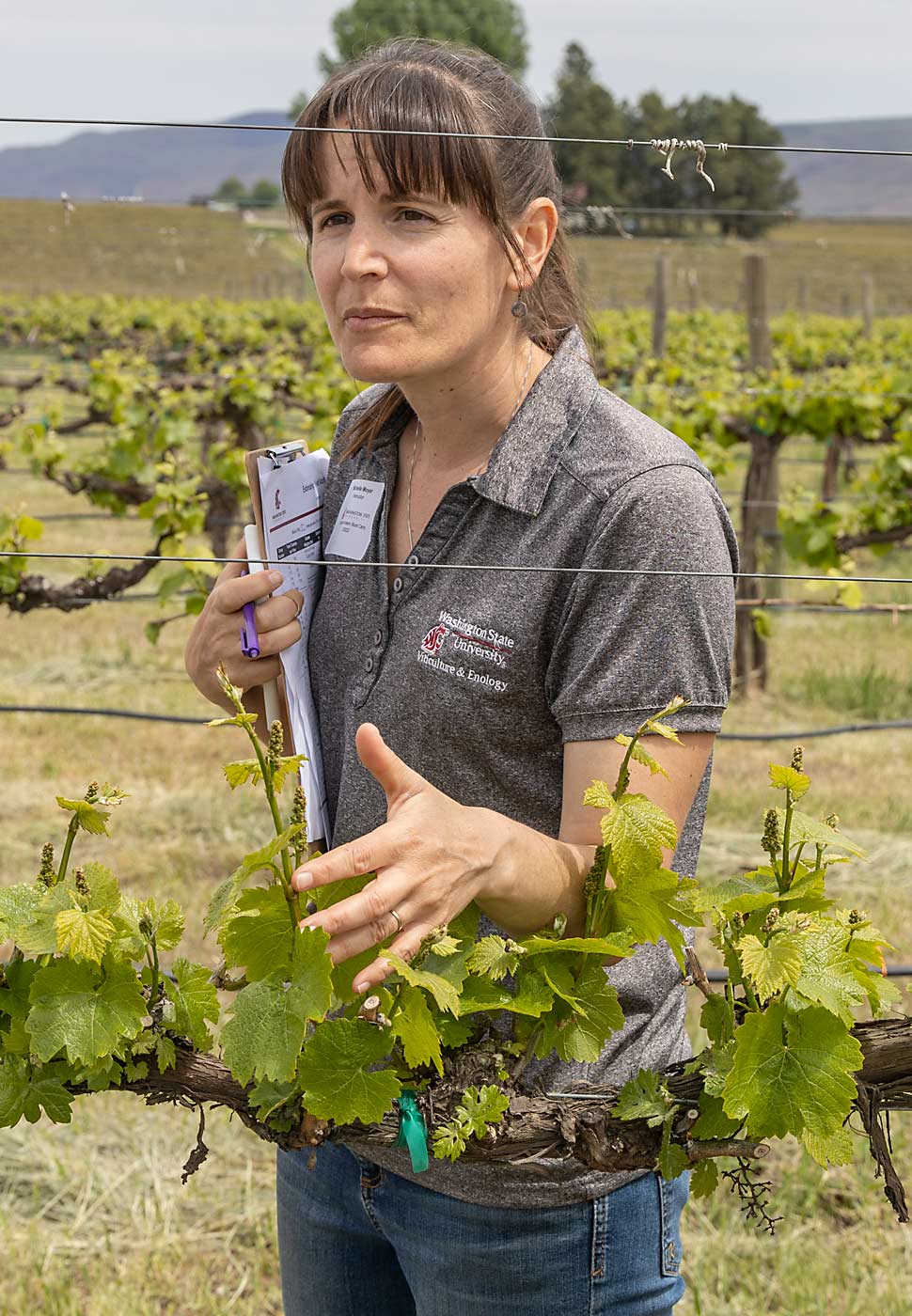
My partner for the exercise, Becca De Kleine, is also not an intern. She manages Four Feathers Wine Services in Prosser, Washington, and told the group that for wineries, “crop estimates are a huge deal, and we want them as early as possible.” The only thing worse than receiving more fruit than she expected — with nowhere to put it — is to receive less than expected when everything else needed to make that nonexistent fruit into wine has already been purchased, she said.
De Kleine and I counted all the clusters on 10 vines, which ranged from 38 to 85. We multiplied the average by the historical cluster weight average of 0.19 pounds and multiplied that by the 871 vines per acre. Divide that by 2,000 and we predicted 5.2 tons per acre.
Other teams took the same mathematical approach but deployed different scouting strategies to how they selected the vines to count. The estimates ranged from 3.7 tons to 5.6 tons. Subsequent passes as the season progresses are obviously needed as the fruit develops, eventually adding preharvest cluster weight data to replace the historical average.
What we learned was that the vineyard was much more variable than it looked. Moyer said that one side, adjacent to an old hop field flush with fertilizer, typically yielded higher than the opposite side.
So, how you approach scouting, be it for pests, pathogens or clusters, impacts what you find. We also practiced different sampling strategies — using colored stickers, so even my untrained eye could spot them — to see how a random approach can help you find more clustered pests, for example, but may skew your overall data.
The human eye is drawn toward the largest clusters or the ripest, or the vine that’s distinctly struggling, so we are never as random as we think we are, Moyer said.
Stratified sampling helps to reduce that bias. She generally recommends a strategic approach — look at every 10th vine or walk every fifth row, for example.
Scouting is a lot of work, but it’s a foundational job in the vineyard system.
“If you can easily find it, to be honest, you missed the boat,” she said.
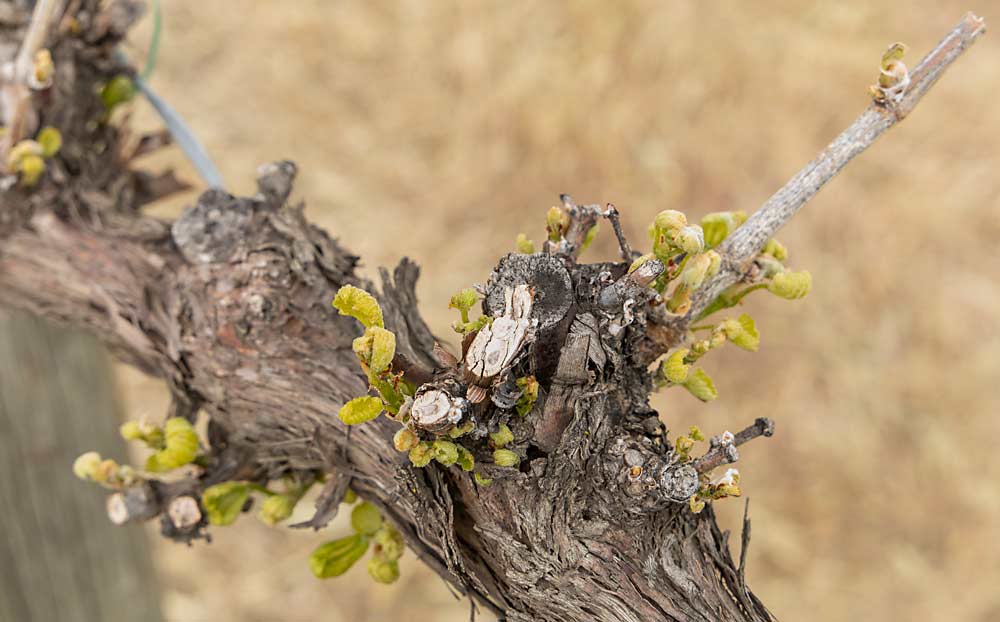
The day ended with a classroom exercise on troubleshooting nutrition problems. Moyer gave intern teams a fictional farm’s soil and foliar nutrient analysis, along with a brief synopsis of the problems they were experiencing. Armed with WSU’s guide to vineyard nutrient management, which includes tables of the recommended nutrient ranges and the symptoms of deficiencies, we diagnosed our problems and then shared the process and conclusions with the group.
Luckily for me, De Kleine and I got an easy one: A spring soil test showed low levels of boron and zinc, so the grower wanted to put on a foliar application, but then the leaf tissue testing revealed levels of boron, zinc and iron well above the recommended range. What happened? Well, the unwitting consultant pulled tissue for the leaf sample right after the foliar application went on, tainting the results.
Interns are unlikely to do this sort of troubleshooting on their own this season, but the exercise shows how the students can turn what they are learning in school into on-the-ground problem solving. No one is going to hire me to scout their vineyard any time soon, but it helped me to see how the puzzle pieces of management are linked throughout the season.
For De Kleine, who started her Washington wine career as a Ste. Michelle intern back in 2010, the training was an opportunity to refresh some vineyard skills she rarely uses in her role as winery manager and to meet some of the freshest faces joining the industry.
“Maybe I’ll be hiring some of them in a few years,” she said. •
—by Kate Prengaman

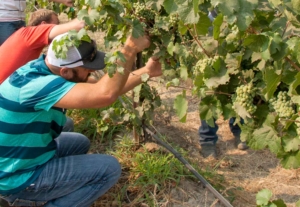





Leave A Comment